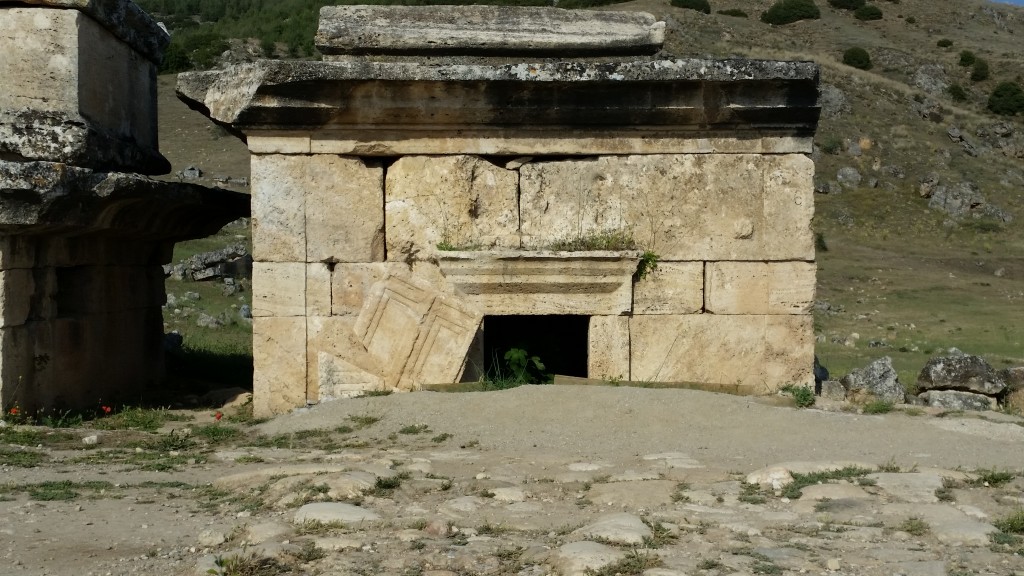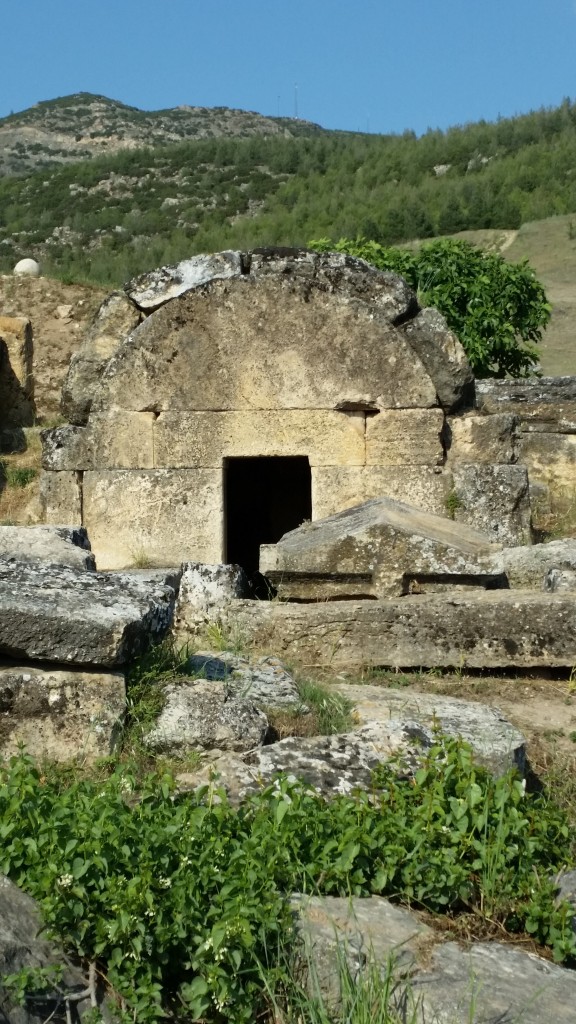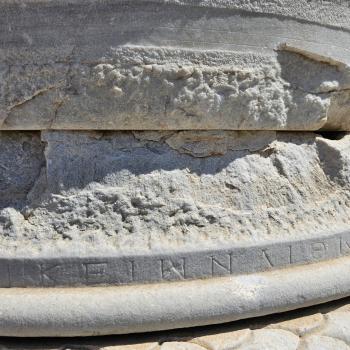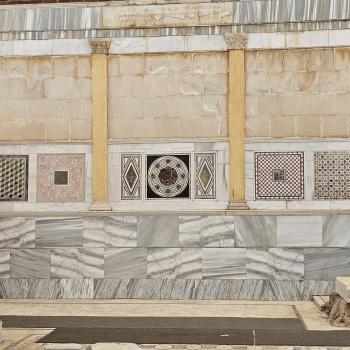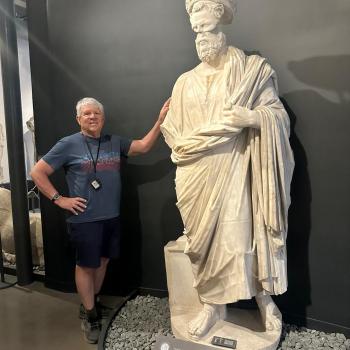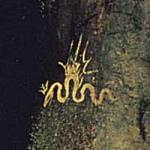The Lycus Valley is a large,long, lush valley which includes three ancient cities of importance for Christianity— Hierapolis (which we will visit first), Laodicea, and Colossae (which we will not visit, as no dig has ever transpired there, and there is just a small mound of dirt there. We have found evidence of an odeon there sticking out of the side of the hill, but that’s it).
Hierapolis is important as a center of early Christianity, including the final home of Philip and his prophesying daughters, probably Philip the Evangelist mentioned in Acts, not Philip a member of the Twelve. These were two different persons. But it was also the home of Bishop Papias, one of the first commentators on our Gospels, about whom we will say more soon.
What Hierapolis is famous for today is its calcified limestone cliffs, called Pammukale, (cotton candy), and as in antiquity people come here for the hot springs, and for healing. Of course the irony is, many simply come here and die, so there is a gigantic necropolis on the north side of Hierapolis. But first the cliffs… Dover move over.
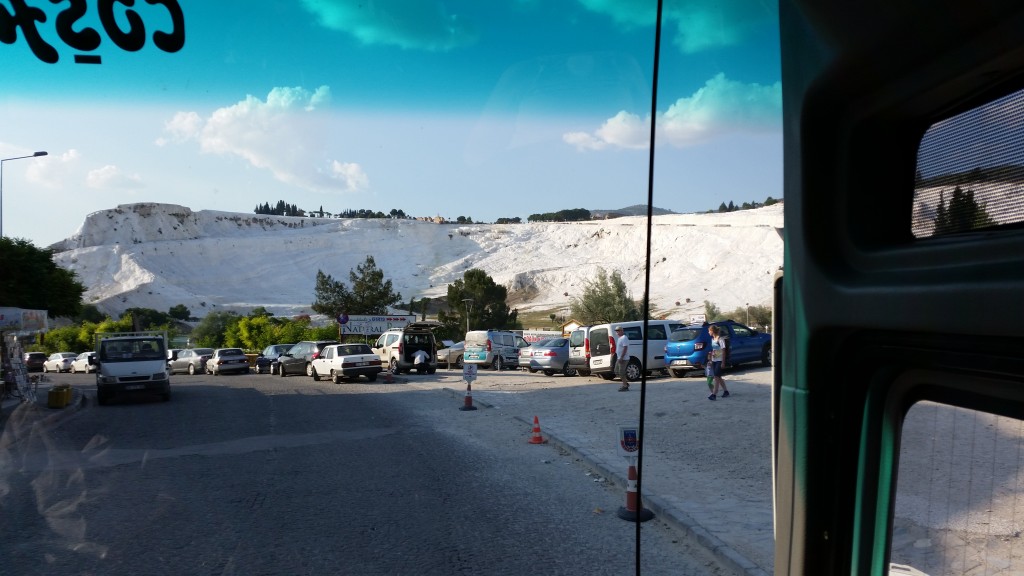
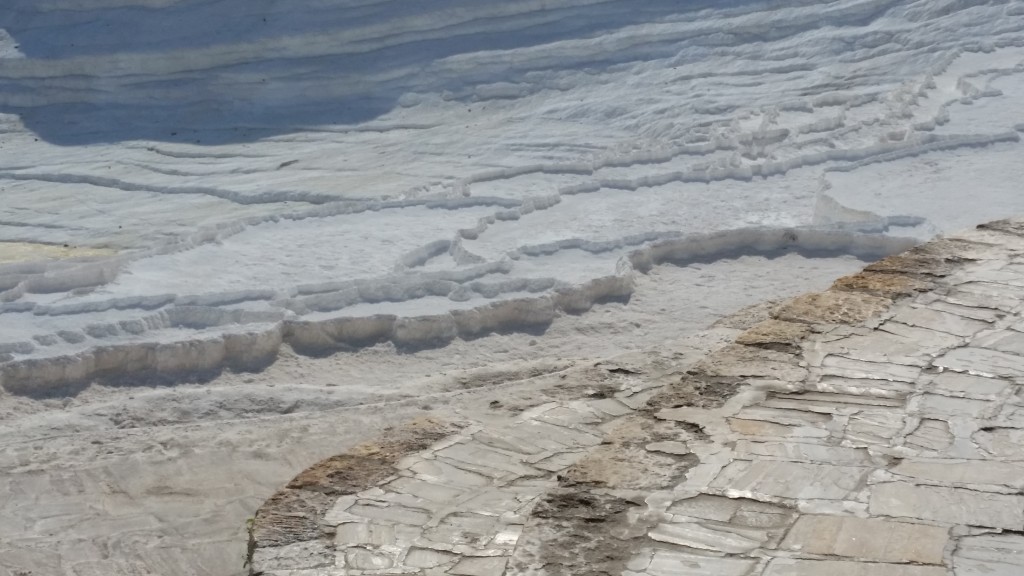
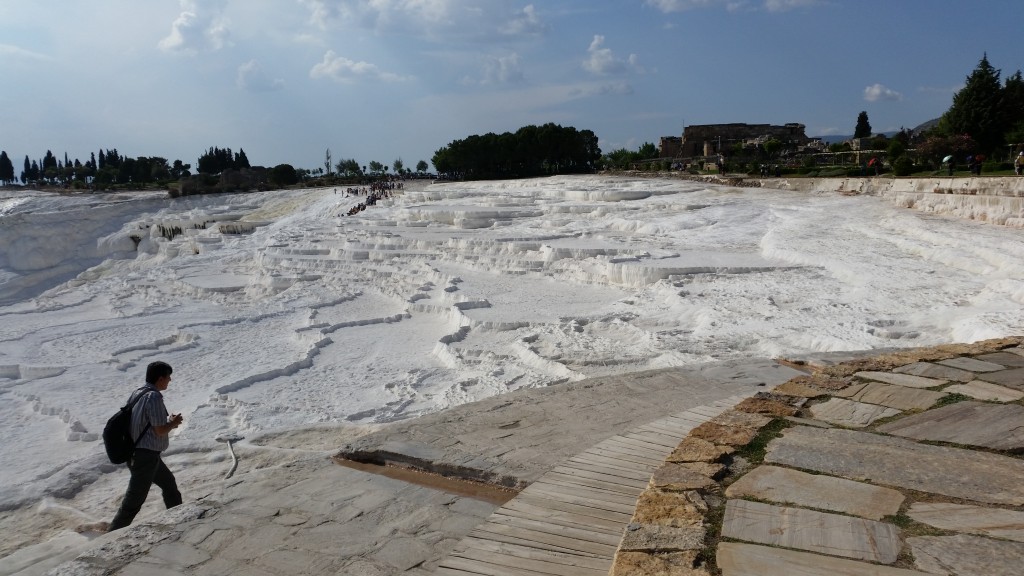
In this last picture you can see the Lycus valley clearly, which proved to be such a fertile ground for the growth of Christianity.
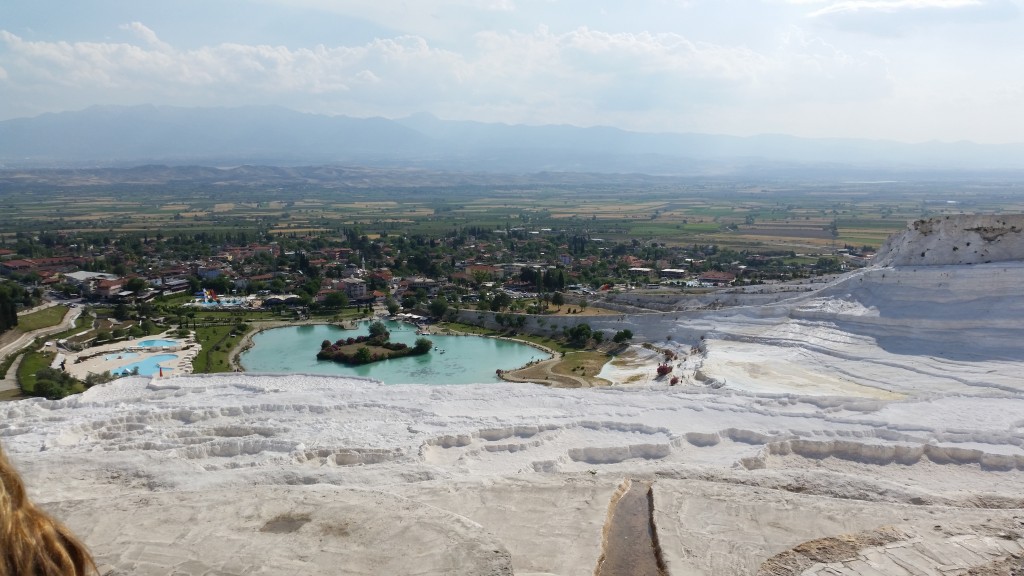
Here’s a map to orient us, and we will be starting at the northern end of the city and walking back south, from left to right on the map starting with the necropolis.
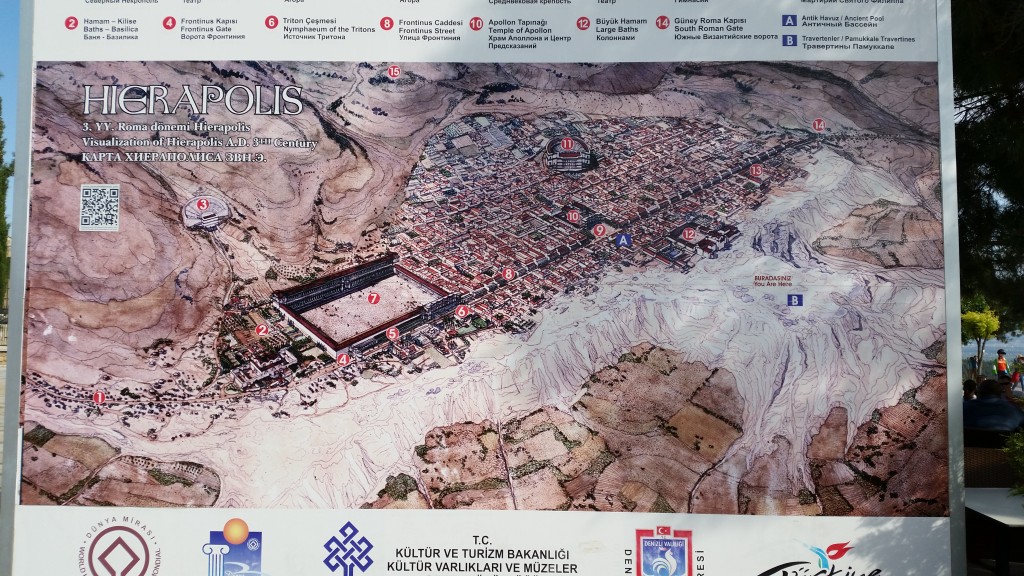
Where did the stones come from to make these monumental tombs… they were quarried locally, as can be seen from this picture….
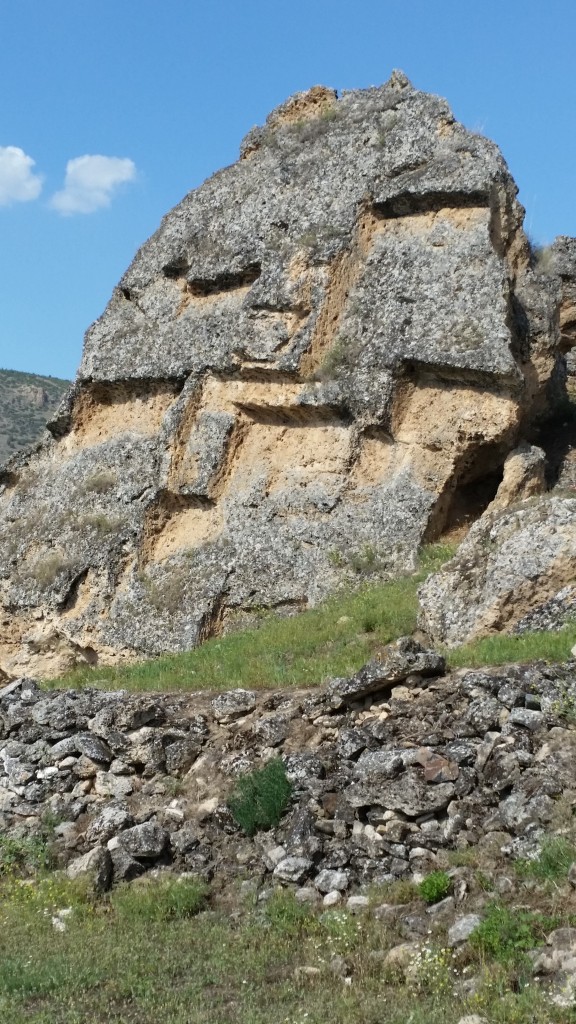
And the masons made all sorts of tombs— subterranean ones, above ground ones, square ones, ones with round tombs. You name it, they made it, according to the wishes of the bereaved who had money to spend.
There are tombs that look like houses, and tombs that look like temples,
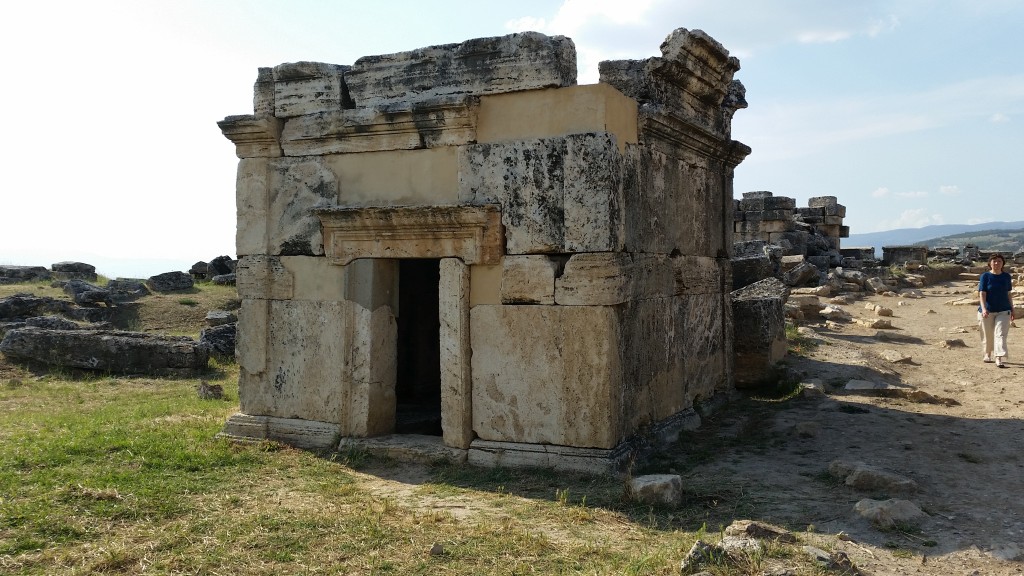
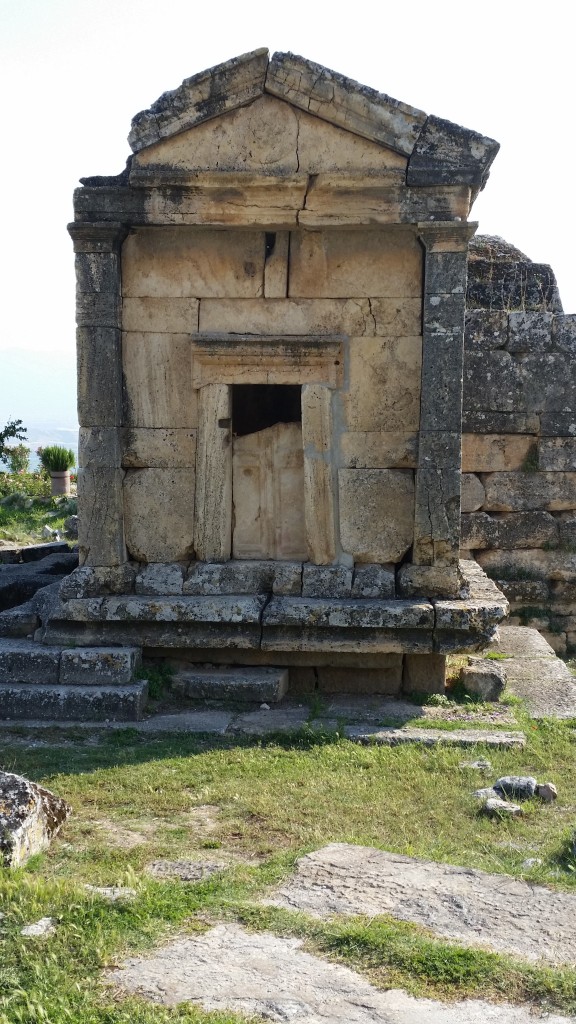
And then there is the tomb of that long running business man, Flavius Zeuxsis, who managed to get himself buried right next to the city gate next to Frontinus St. the main street through town.
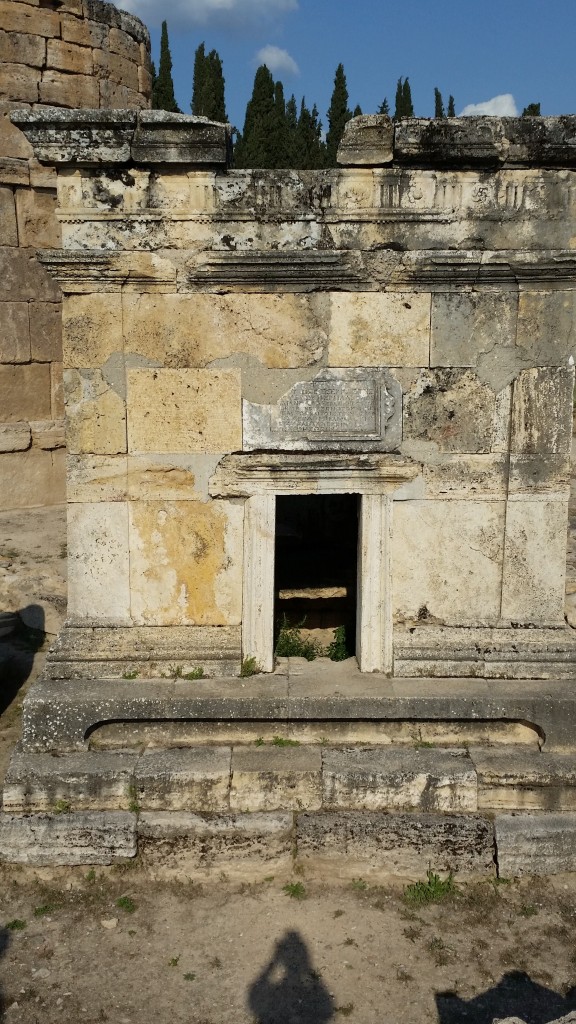
Here is his epitaph in which he brags he successfully made 72 round trips to Rome and back around the cape at the bottom of Greece. Death caught up with him anyway.
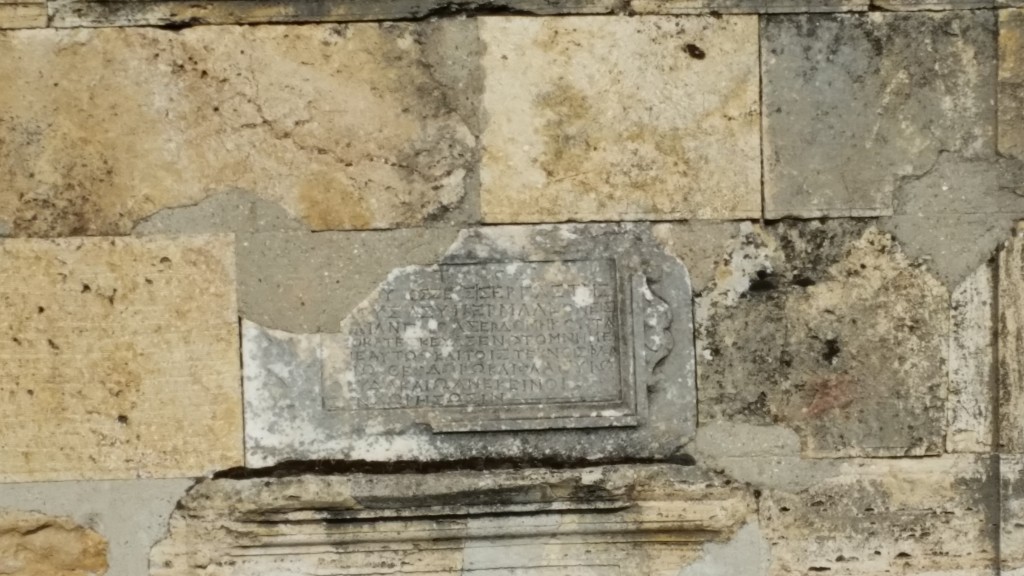
Besides more tombs,
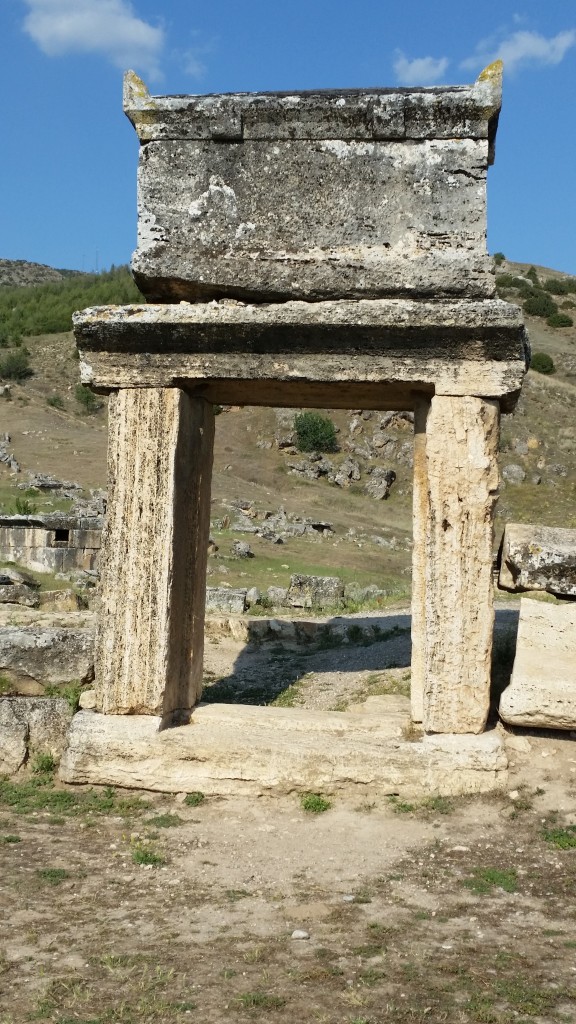
This one being a monumental sarcophagus (which means ‘flesh-eater’), there are lots of interesting funerary monuments in the Hierapolis museum, for instance,
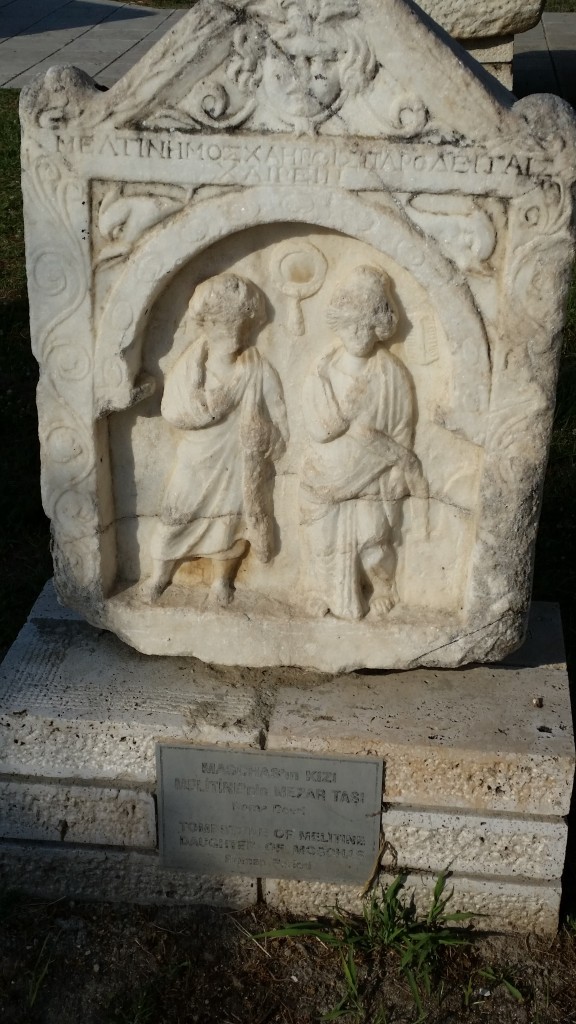
Typically they show the husband and wife, or the wife and her children if she died first,
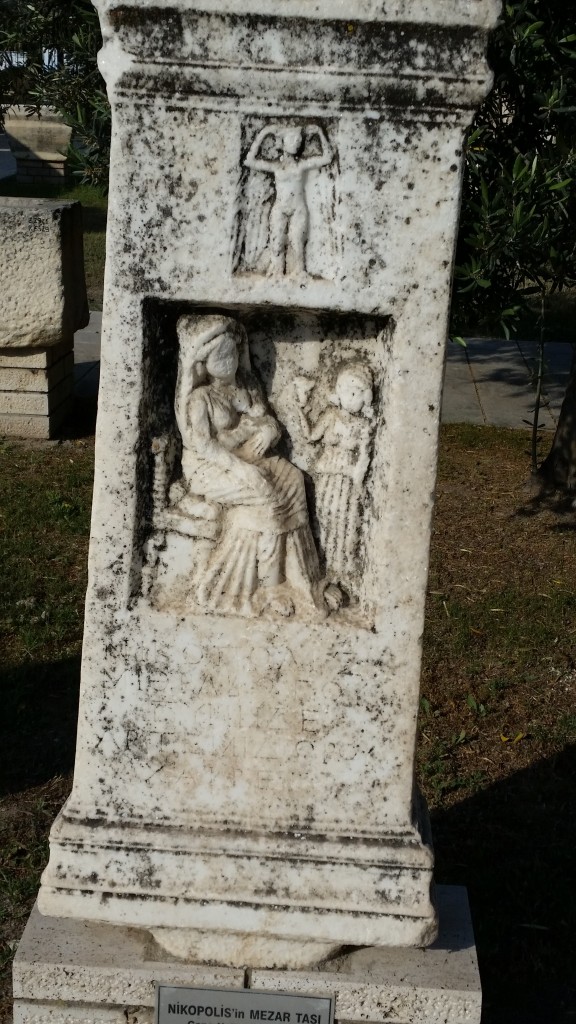
Sometimes a whole family dining scene is shown, and here is where I say many ancients believed their loved ones survived death, and so there were funerary meals actually held on the tomb of the deceased, and there were pouring spots into the tomb to serve the deceased some wine.
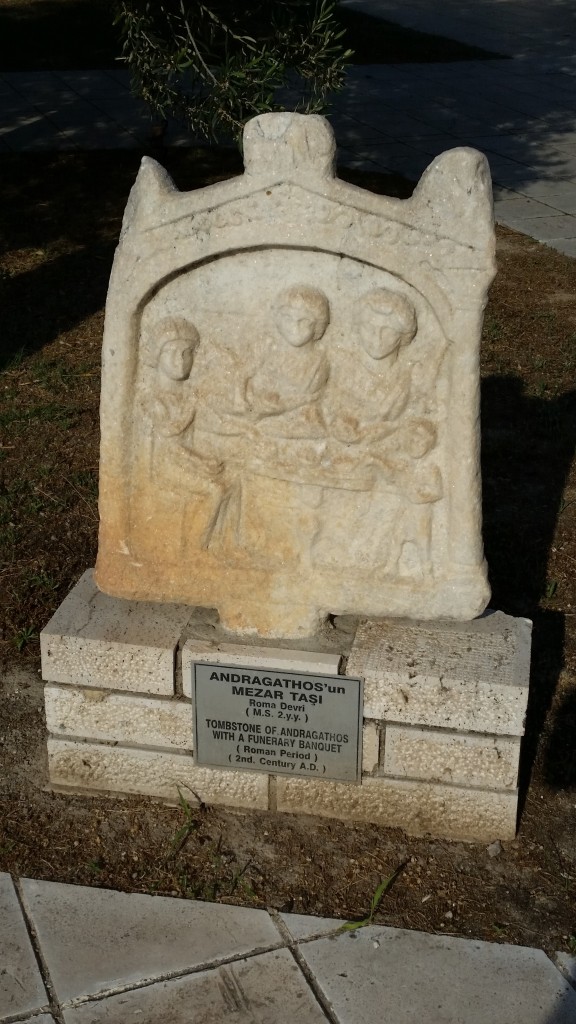
For our purposes what is very important is this funerary monument to one Papias Klesos, who is called a good or worthy shepherd (chrestos) is used), and he sends grace to passersby who see his monument. This may well be our Papias, as mere literal shepherds didn’t get monuments like this.
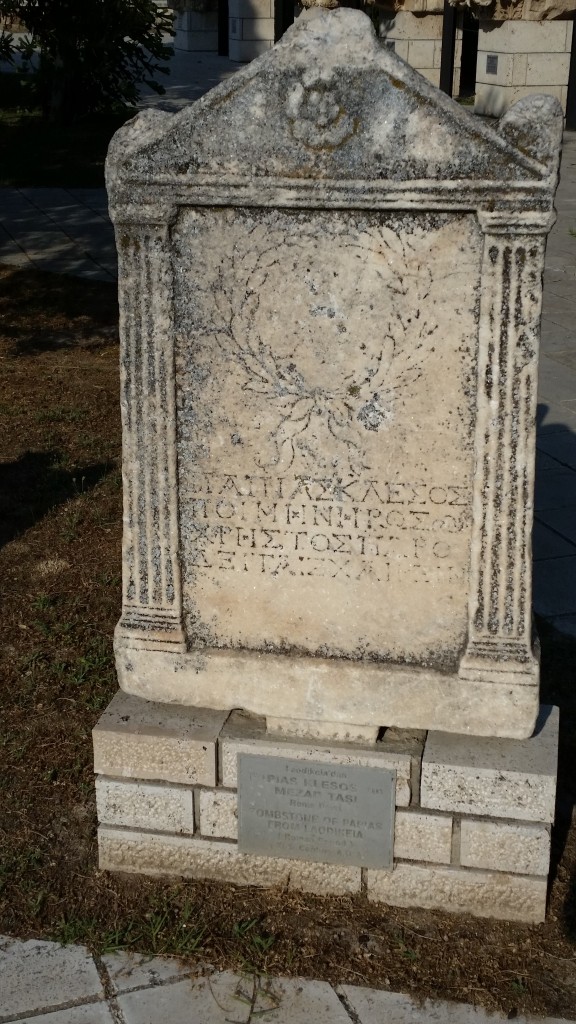
As one passes through the monumental gates on Frontinus street (next to which is the aforementioned tomb of Flavius),
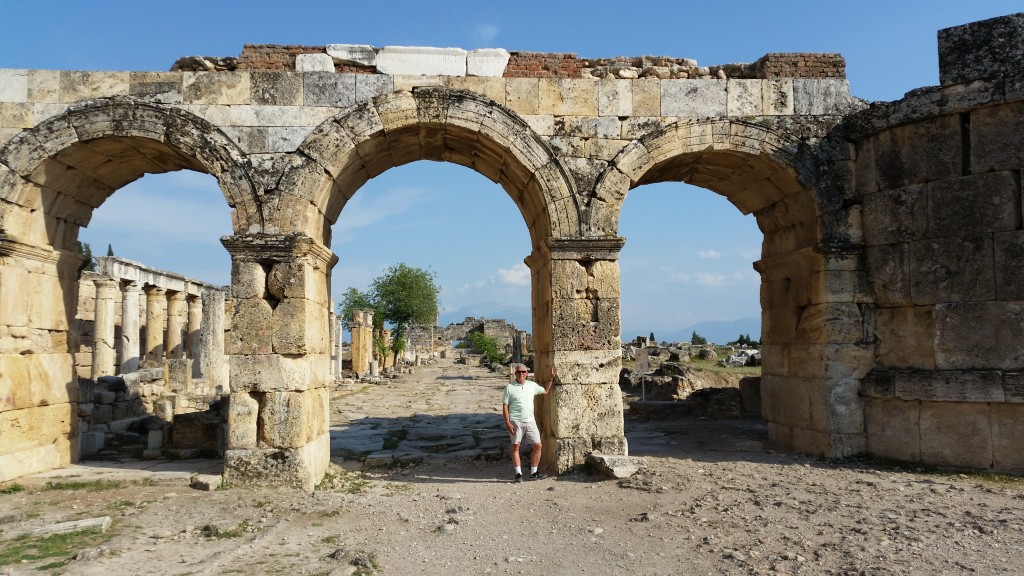
one has already passed huge agora and then baths complexes
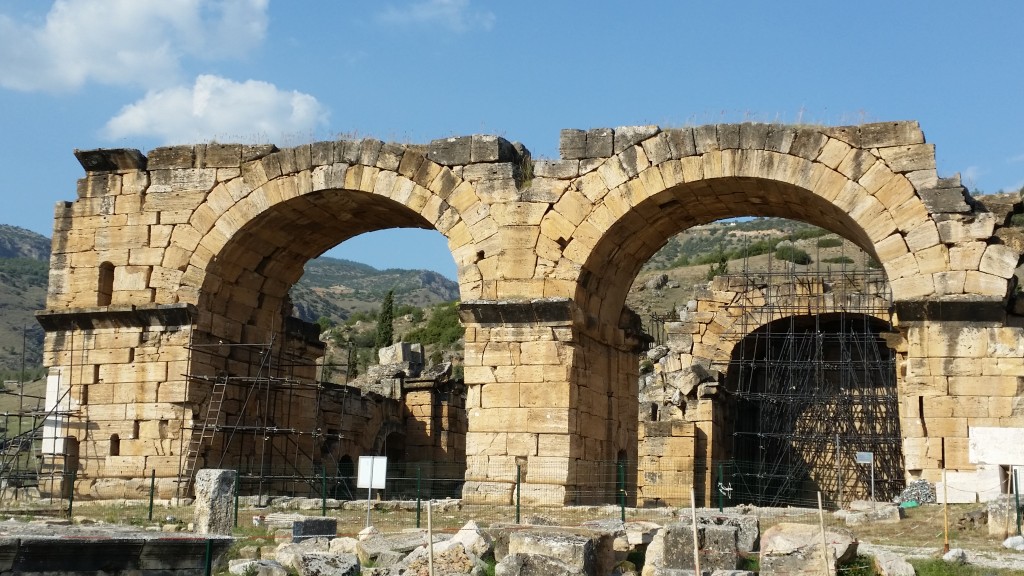
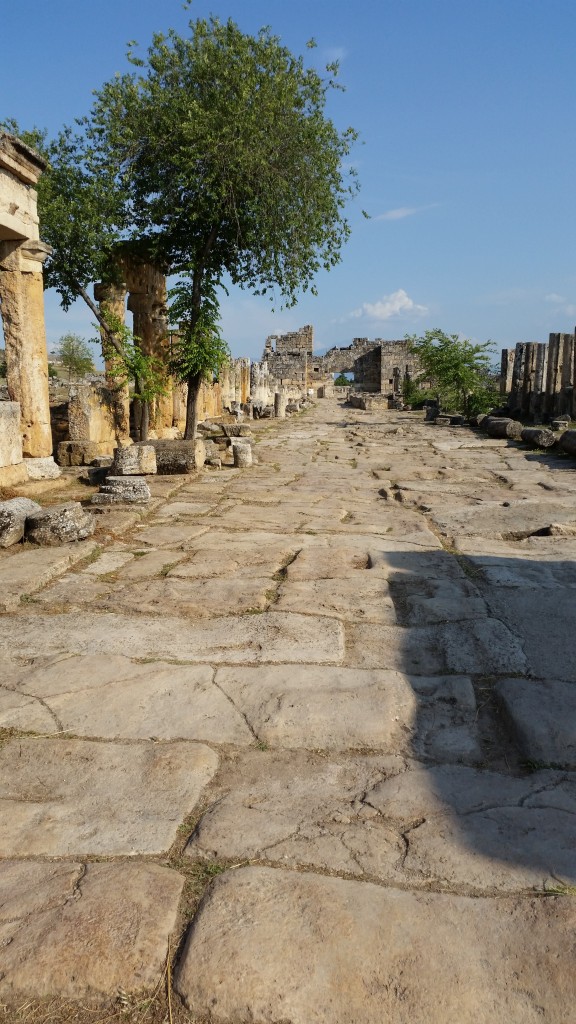
One sees water troughs, bringing water into the city from the hills above..
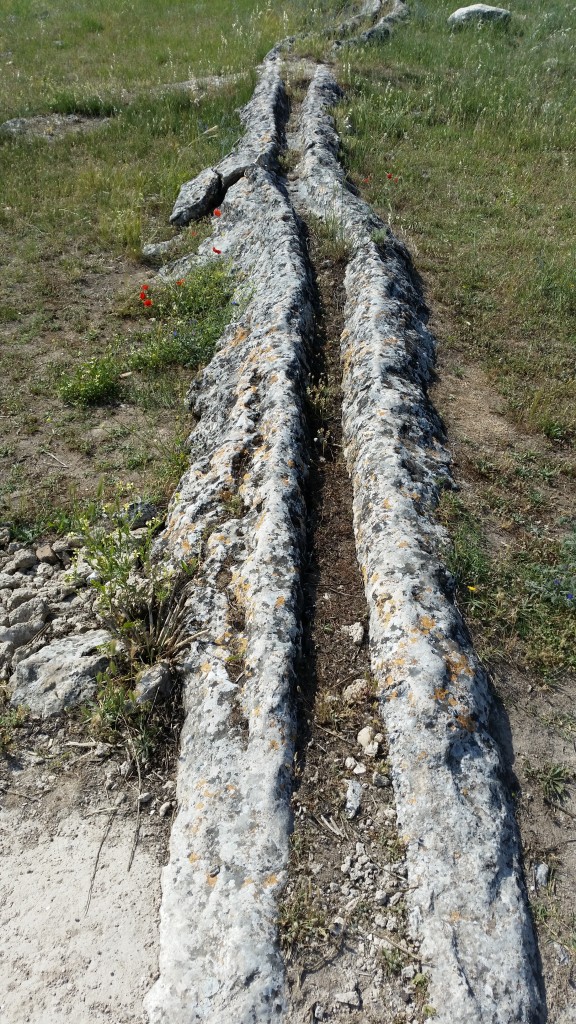
There is at the south end of the city the huge theater.
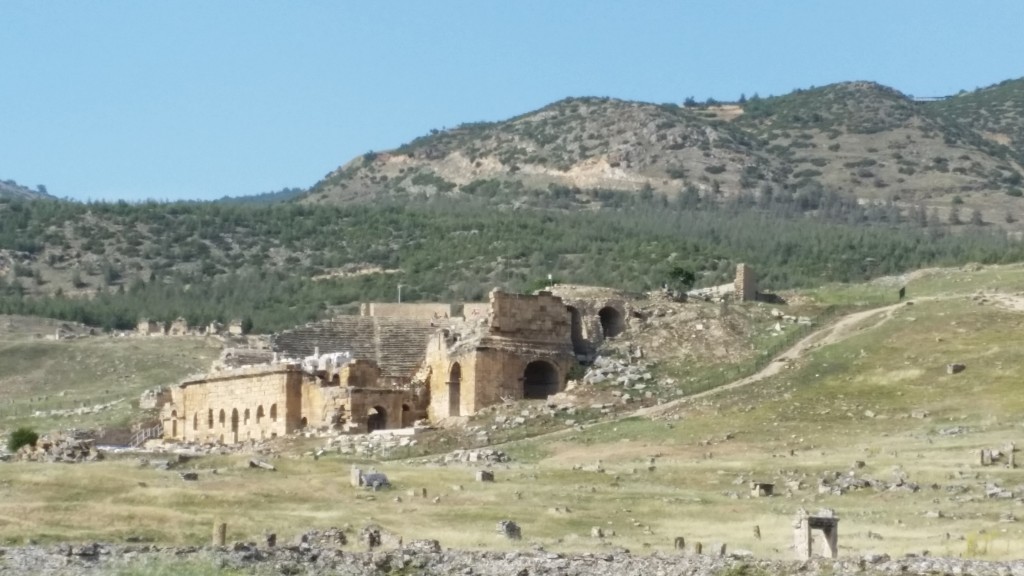
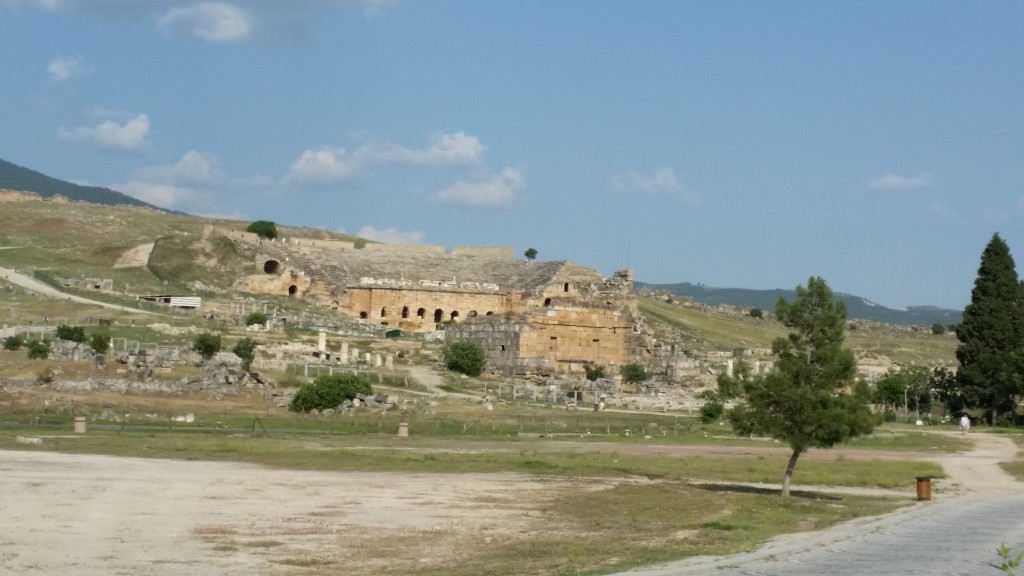
I haven’t even talked about the Martyrium of Philip, with recent discoveries up on the hill above the theater, or the Plutonium and the adjacent Temple of Apollo. They will have to wait for another time.


